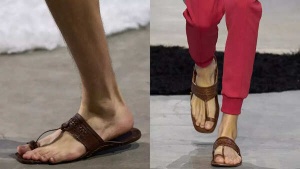Unexpectedly caught in a downpour? It happens. Finding yourself drenched with no change of clothes is never ideal. But don't worry! Here are some smart and practical tips to help you dry your wet clothes faster, even while you're still wearing them.
No need for dryers or magical solutions – just a few clever techniques to combat that uncomfortable, damp feeling.
Your first reaction might be to squeeze the water out. That's a good start! However, avoid harsh twisting, which can damage the fabric. Instead, wring gently and then pat dry using absorbent materials.
If available, use paper towels, napkins, or tissues. Place them inside the fabric, especially in areas like underarms, hems, and sleeves, then gently press. A hand towel or scarf works even better. The drier the fabric to start, the faster it will air dry.
Air movement, not just heat, is essential. Clothes dry more quickly when in motion. Standing still in a humid environment won't help.
Walk around, swing your arms, or stretch to create airflow between your skin and the wet fabric. If there's a fan or AC vent nearby, use it! Outdoors, face the wind. Increased airflow accelerates the drying process.
Bonus: If you have access to a ceiling fan, stand underneath it and extend your arms. This will improve drying time significantly.
It might sound odd, but layering can help. Throw a jacket, hoodie, or shawl over your wet clothes. This not only shields you from the wind chill but also traps body heat, which speeds up evaporation.
Choose a loose-fitting outer layer to create a warm, insulated space between the damp fabric and the outside air. Avoid plastic raincoats, as they can trap moisture and make you feel like you're in a sauna.
Public restrooms often have hand dryers. These aren't just for hands! They can be extremely useful for drying soggy sleeves, hems, and collars.
Target the wettest areas individually, holding the fabric a few inches from the air vent while rotating it slowly. Focus on cuffs, waistbands, and areas where water accumulates. Remember to be discreet and avoid stripping down in public.
If a hand dryer isn't available, a hair dryer works just as well. Even the warm air from a car vent or heater can help if positioned correctly.
Your body is a natural heater! Use it to your advantage. Continuous movement, such as walking, light jogging, or even swaying, keeps warm air circulating between your skin and the wet fabric.
Staying active generates body heat that aids evaporation. Gentle stretching or a brisk walk can make a significant difference, especially for damp areas near your core and arms.
Being caught in the rain is inconvenient, but it doesn't have to ruin your day. By implementing these simple strategies and using your surroundings effectively, you can dry your clothes faster than you think.
Newer articles
Older articles
 New Zealand Cricket Announces Packed 2025-26 Home Summer Against Cricket Giants
New Zealand Cricket Announces Packed 2025-26 Home Summer Against Cricket Giants
 India Poised to Unleash First Dengue Vaccine as Phase 3 Trials Wrap Up
India Poised to Unleash First Dengue Vaccine as Phase 3 Trials Wrap Up
 Ayesha Shroff’s REACTS to influencer telling her son, Tiger Shroff, to stop acting’: 'And you are who exactly'
Ayesha Shroff’s REACTS to influencer telling her son, Tiger Shroff, to stop acting’: 'And you are who exactly'
 Vitamin D deficiency can increase the risk of pancreatic cancer; know key symptoms
Vitamin D deficiency can increase the risk of pancreatic cancer; know key symptoms
 Relationship Roadblocks: Spotting Early Signs of Commitment Phobia
Relationship Roadblocks: Spotting Early Signs of Commitment Phobia
 Prada Admits Kolhapuri Chappal Influence After Design Controversy
Prada Admits Kolhapuri Chappal Influence After Design Controversy
 5 Overlooked Warning Signs of Colon Cancer: What You Need to Know
5 Overlooked Warning Signs of Colon Cancer: What You Need to Know
 Cricketer Nitish Rana Eyes Delhi Comeback After Disappointing Uttar Pradesh Stint
Cricketer Nitish Rana Eyes Delhi Comeback After Disappointing Uttar Pradesh Stint
 Bangladesh Test Captain Najmul Hossain Shanto Resigns After Sri Lanka Defeat
Bangladesh Test Captain Najmul Hossain Shanto Resigns After Sri Lanka Defeat
 SA20 Auction: Teams Can Keep Up to Six Players, Purse Increased to $2.3M
SA20 Auction: Teams Can Keep Up to Six Players, Purse Increased to $2.3M